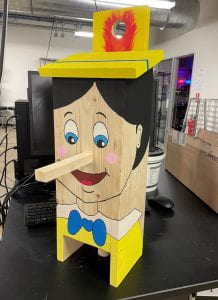Content warning: My project deals with pediatric sexual abuse. Please take care of yourself while reading this blog.
Going into this internship, I was very excited to be able to work on an impactful project with amazing and talented people from a variety of backgrounds. This first week has truly made that a reality! As someone who has engaged in a variety of extracurriculars related to social justice and human-centered design, I’ve always really enjoyed opportunities where I’ve been able to work with groups with a clear broader purpose of helping make this world a better place. That’s the amazing thing about working on global health projects: we all share the common goal of improving health access and equity. Additionally, this internship and the Rice 360 Global Health Department as a whole have really emphasized from the beginning the benefits of a wide range of perspectives in designing truly sustainable and efficient solutions to these complex design challenges we wish to tackle. That’s why it is so exciting and welcoming for me, a Social Policy Analysis and Economics major to take the Global Health Technologies minor and work with many people from more technical engineering backgrounds in a collaborative setting, because we really learn a lot from each other.
When choosing a project, my main goals were to find one which aligned with my interests, where the social context was a key component of the design challenge, and which would have a large impact on the current status quo. All of the projects this year are exciting and important. I ended up choosing the pediatric pelvic model project, in which my team will work to develop a model for use in training nurses to conduct pelvic exams for pediatric sexual assault survivors. This is an important step of the process following the report or reasonable suspicion of pediatric sexual assault, and is a key component to making sure these survivors get the proper care they deserve. Our team is working with Ms. Nancy Harris, the TeleSAFE Director of Operations at United Concierge Medicine and director of forensic examiner nurse trainings in New York. She is very passionate and knowledgeable about this space and this project in particular. One thing that makes this project very exciting to me is the huge need for better training models and we will really be paving the way for something new. There are few professionals in this field and no currently available hands-on training models for training nurses, resulting in prolonged training periods. Although this is a very heavy project topic, our team has received overwhelming support from each other, our TAs, our internship leadership team, and our client. Everyone working with me has made it feel like a safe space to work on such an important yet emotional project, making it feel like a very supportive atmosphere. This sort of emotional awareness and support is truly crucial to working on a team project, especially with such a topic like this, and I very much appreciate everyone I’m working with.
This past week with the project we have been working on doing background research into the problem space, similar solutions, and potential materials. Additionally, we had a preliminary meeting with our client, who was very helpful in clarifying the need for and logistics of the project and is very supportive of our team. The internship programming included workshops to help us get familiar with the stages of the engineering design process and some prototyping tools. We built birdhouses in order to gain basic experience in hand tools. Our team, which consists of myself, a junior from Rice University, Shivani and Shannon, both sophomores from Rice University, and Alex, a sophomore from the University of Texas at Austin, has also done some bonding over the past week, including going to dinner together after work. It has been really great working with such passionate and interesting people from various backgrounds! I’m looking forward to diving deeper into design details and brainstorming how to make this design project come to life and be able to make a huge change!








